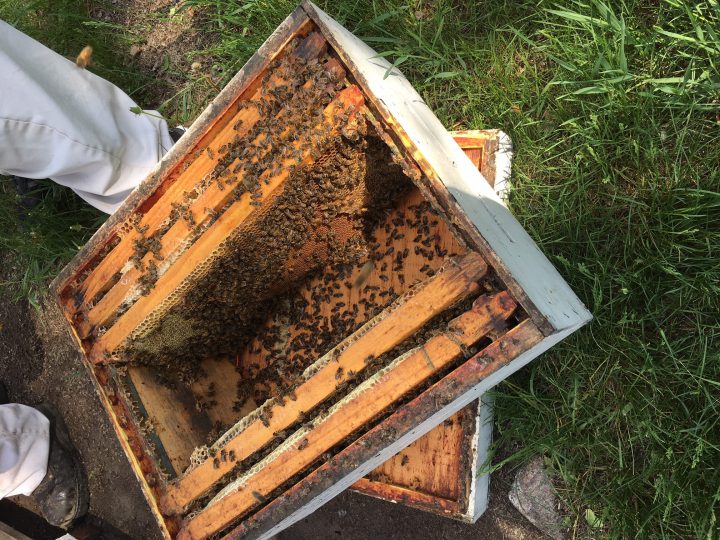At Sun River Honey near Grandora, Sask., Sara Comerford and four employees are hard at work.

Spring is always a busy time for the company but this year they’re putting in longer hours than ever dealing with dead-outs from an exceptionally brutal winter.
“I just became numb to it,” Comerford said. “I had to because it’s just heart breaking to see hive after hive that’s just not going to be viable.”
The Saskatchewan Beekeepers Development Commission (SBDC) is calling it the worst year in the history of beekeeping in the province.
“A cold winter with a below normal cold snap at the end of the season is to blame. mortality rates are high right across the province,” SBDC president Simon Lalonde said.
The commission is still analyzing numbers but expects provincial losses to average out at 35 to 40 per cent.

Get breaking National news
Comerford has lost 43 per cent of her 1966 hives.
In Saskatchewan, each hive can produce up to 200 pounds of honey per year. The hive itself, is valued at more than $300.
“For most beekeepers they’re going to be taking what they have left and recovering so making splits, making nukes in an effort to build their numbers back up to the number of hives they want,” Lalonde explained.
“By splitting up the population, we sacrifice a lot of the honey crop. So for beekeepers in Saskatchewan, that will be a lot less honey income in the fall.”
One-third of Lalonde’s honey sits in storage. It will be used to supplement his income during a year when honey production will be down.
Saskatchewan’s 20 million pounds of honey production is expected to drop drastically.
“Prices may go up a little. It’s definitely going to be a lean year for honey,” Lalonde said.
Likewise for canola yields, which can increase by 10 to 15 per cent with the assistance of bees.
“That loss might not be measured directly by farmers. They may blame it on a dry year or too much heat at the wrong time but with less bees around that intrinsic value will drop,” he said.
Saskatchewan has 1,100 beekeepers, ten per cent of which produce on a commercial level of 100 hives or more. According to Lalonde, nearly all are planning to rebuild.
“It will probably take us two years to come back up to production numbers that we’d like to be at,” Comerford said.
With research pointing to pesticides causing declining bee populations, hobby beekeeping is a growing trend.
Rick Vanduyvenyk, owner of garden retail store Dutch Growers, said customers are coming in with increased frequency looking for hives.
“So what you can do with the bees is put a beehouse out and attract just natural bees or you can bring bees in that will help pollinate like leaf cutter bees.”
This hobby effort will help with pollination, as for commercial producers, there’s a lot of work ahead.
“Beekeepers are a pretty resilient bunch. They’ll bounce back,” Lalonde said.














Comments